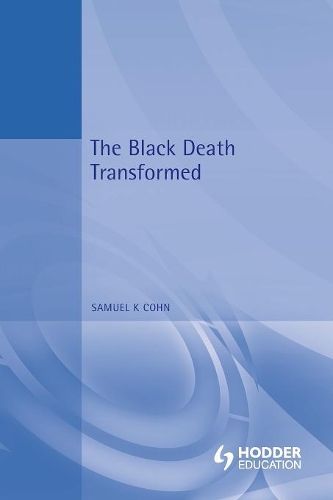
The Black Death Transformed: Disease and Culture in Early Renaissance Europe
(Paperback)
Publishing Details
The Black Death Transformed: Disease and Culture in Early Renaissance Europe
By (Author) Samuel K. Cohn
Bloomsbury Publishing PLC
Hodder Arnold
1st April 2003
United Kingdom
Classifications
Tertiary Education
Non Fiction
History of medicine
Social and cultural history
614.5732094
Physical Properties
Paperback
336
Width 154mm, Height 232mm, Spine 17mm
506g
Description
The Black Death in Europe, from its arrival in 1347-52 through successive waves into the early modern period, has been seriously misunderstood. It is clear from the evidence presented in this account that the Black Death was almost any disease other than the rat-based bubonic plague whose bacillus was discovered in 1894. Since the late 19th century, the rat and flea have stood wrongly accused as the agents of transmission and historians and scientists have uncritically imposed the epidemiology of modern plague on the past. Unshackled from this misconception, this guide turns to its subject afresh, using sources spread across a huge geographic tract, from Lisbon to Uzbekistan, Sicily to Scotland: more than 40,000 death documents (from last wills and testaments to the earliest surviving burial records), over 400 chronicles, 250 plague tracts, 50 saints' lives, merchants' letters and much more. These sources confirm the terror of the medieval plague, the rapidity of its spread (unlike modern plague) and the utter despondency left in the wake of its first strike. But they also point to significant differences between medieval and modern plague, none more significant than the ability of humans to acquire natural immunity to the former but not the latter. Over its first hundred years, adaptation to the new microbial plague enemy came with striking speed and success. In place of despondency came a new sense of confidence. From God and the stars, contemporaries turned to cures and socially grounded explanations. And in this context the Renaissance found a foothold and climbed with assurance - not only in Florence but in places as far removed from the supposed centres of Renaissance culture as Danzig. Such a major cultural and psychological change centred, this study argues, on the particular character of the disease - the swiftness with which Europeans adapted to their new bacillus (whatever it might have been).
Reviews
This is a book without comparison. Cohn has successfully undertaken the formidable task of dealing with a major and controversial topic over a vast period of time and within a geographical area that stretches from England to India. Well-conceived, imaginative, and strongly argued, The Black Death Transformed is a definitive work on an important and much studied subject and will remain so for a long time. William M. Bowsky, Professor Emeritus, University Finally, here is a book that examines original sources throughout Europe to challenge convincingly the age-old paradigm of the Black Death as bubonic plague. Dr John Henderson, Wolfson College, Cambridge delightfully readable. Conveys an ambitious and ultimately convincing argument in precise, often amusing prose. Cohn displays a combination of academic rigour and the ability to render the complex intriguing. The Independent a fascinating account. New Scientist The impressive level of primary and secondary research, will make this well written and readable work impossible for historians to ignore. Highly recommended. CHOICE Well-conceived and well-argued, The Black Death Transformed will remain an important work for many years to come. International Journal of Epidemiology A penetrating and exhuastive study . History of Medicine
Author Bio
Samuel K. Cohn is a professor at the University of Glasgow.
